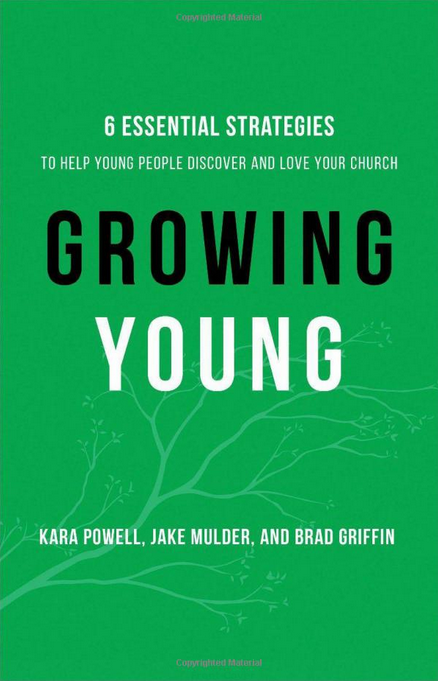Churches are having a tough time embracing millennials and “growing young”. This is for a variety of reasons, and is strikingly similar in the struggle that generations before had in embracing “those Gen X’ers” or others. So how do you successfully embrace the younger new leaders and effectively grow in depth and breadth as a church? Doing so will increase your impact for the gospel, so we would argue it is essential. If you are a part of an older, established church (or any church really), there is hope!
There is hope for an older (or any) church!
Although Growing Young was released in 2016, it has come to our attention as of late, and we are thrilled to endorse it to any church that is willing to press into the next phase of their history, that being to equip and empower the next younger generations with all they need to lead; to advance the “big C” church.
Growing Young is written by Kara Powell (also wrote Sticky Faith), Jake Mulder, and Brad Griffin all of whom are associated with the Fuller Youth Institute. They take years of research and compile the findings into “6 essential strategies” for churches to deploy to transition from an older church, to one who is vibrant and younger, embracing the youth and consequently becoming a more robust and gospel advancing community.
The Growing Young Wheel (seen below) encapsulates the six essential strategies into a visual representation of what it means to adopt the practices as a church. Fuller has also provided a great one sheet print out of the diagram and the strategies, called the “6 Core Commitments of Churches Growing Young“.

How can this help my church be more Gospel Centered?
When it comes to keeping the Gospel the center-point of your strategy as a church, some notable quotes stand out to us in the book, specifically in the chapter discussing strategy 4: “Taking Jesus’ Message Seriously”. One of the assumptions churches make is that this new generation is adverse to challenges. The authors findings seem to counter that notion:
In short, teenagers and emerging adults in churches growing young aren’t running from a gospel that requires hard things of them. They are running toward it. (p. 143)
They go on to say the following later:
Evangelism isn’t dead among young people, but it looks different than in the past century. Vital factors to help young people share faith today include building authentic relationships, listening well, and being honest about questions and doubts. (p. 160)
Clearly, churches need to consider how to shift their outlook on evangelism and how to train their people for it, particularly if they would like millennials to be involved. They even recommend a church position an outreach event or a service project as a way to include non-believers.
In our local service work: invite young people who are not currently part of our church to participate in service and justice work, later explaining how the gospel and Scriptures teachings fuel our relationship with “the least of these” and help us encounter Jesus himself (Matt 25:31-46). (p. 153)
The above simply re-affirms that the gospel is a free gift, but embracing what it means to be a Christ-follower requires much of someone. And, fortunately, this next generation is not timid about stepping into this demanding faith. So, take heart church leader! Continue to take the message of Jesus seriously, and challenge your millennials to do so as well.
We recommend
As you consider what changes may look like for your church, consider going through this book with a leadership team or board. You could work through one strategy per week and discuss it as a staff even. Check out the book here.
Take the next step with iLLUME Consulting:
Request a FREE Quick 5 Assessment + 30 minute consult ($185 value). We take a look at your website and social media and compare them to best practices of the most thriving churches. Then we compile 5 observations and suggestions and unpack them on a 30-minute video call with you. This is 30 minutes of your time very well spent.



